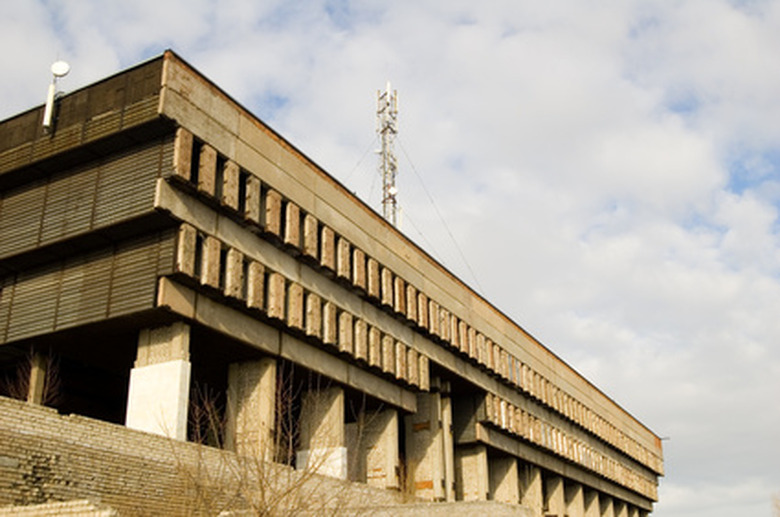What Are The Advantages & Disadvantages Of A Conventional Concrete Slab Vs. A Post Tension Slab?
Post-tension concrete is a method of reinforcing concrete. This concrete has cable conduits cast into it and that cable is stretched, or tensioned, hydraulically after the concrete has hardened. The tension is transferred to the concrete, helping hold it together even better. Post-tensioning provides high strength and stability, but looks just like any other concrete slab. While most home projects don't require post-tensioning, it could still be a useful technique for some builders.
Strength
Strength
Post-tensioned concrete is stronger and more flexible than conventional steel-reinforced concrete. According to the Concrete Network, post-tensioning helps reduce cracking from shrinkage as the concrete dries, and holds together any cracks that do form. Post-tensioning is commonly used in large commercial and industrial projects such as garages and towers.
Size
Size
Conventional concrete slabs are limited in length and thickness. They require a specific level of thickness to maintain their strength – usually at least 4 inches for a slab-on-grade foundation. Long concrete slabs elevated above the ground are limited in length due to the danger of cracking. Post-tensioned concrete can be thinner and longer without risk to its strength or structural integrity, since the cables inside help stabilize it.
Cost
Cost
Post-tensioned concrete will usually be more expensive for the home builder, due to the extra equipment needed. However, in large structures, post-tensioning can actually be less costly than conventional concrete slabs. According to the Seattle Daily Journal of Commerce, this is due to the relatively high cost of structural steel, such as rebar. Post-tensioning uses less reinforcing material, allowing it to cost less in large projects.
Complexity
Complexity
Ordinary concrete slabs require a lot less skill and expertise to pour. Much of the time, you can complete at least part of the work on your own. Pouring post-tensioned concrete is nearly impossible if you're not a professional concrete worker, however, and is best left to experts. Since this material is rarely used in homes, local contractors may not be familiar with it.
References
- Concrete Network: Post-Tensioned Concrete
- Portland Cement Association: Post-Tensioned Concrete
- Concrete Network: Advantages of Post-Tensioning
- "Seattle Daily Journal of Commerce"; Post-Tensioned Concrete for Today's Market; Craig D. Olson et. al.; May 9, 1997
- "Structural Engineering"; Post-tensioned or reinforced?; Daniel Popp; Nov. 16, 2007
